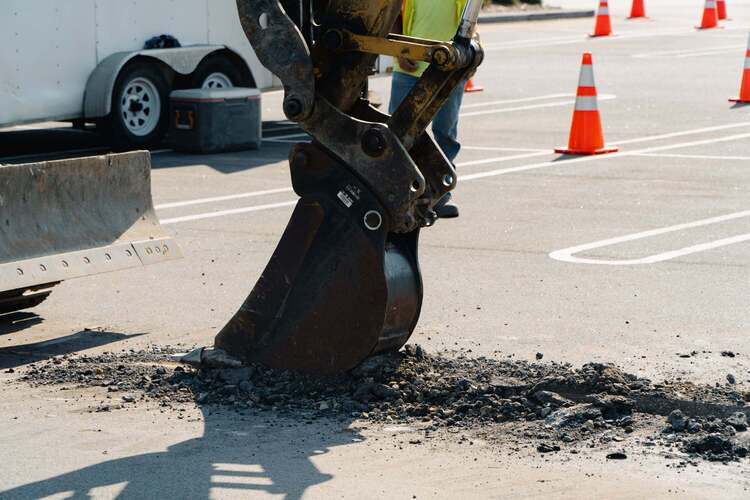Road construction is a critical component of infrastructure development, impacting nearly every industry by ensuring smooth and safe transportation. This complex process involves meticulous planning, coordination, and execution by skilled professionals. In this guide, we’ll walk you through the 8 essential steps involved in a road construction project, from initial planning to final touches, ensuring that each stage meets the highest quality standards.
Step 1: Preliminary Planning for Road Construction
Preliminary planning is the foundation of any successful road construction project. This stage involves determining the project’s concept, which includes defining the road’s purpose, its expected traffic load, and the surrounding environmental and geographic conditions. Engineers and planners also identify funding sources, such as government grants or private investments, ensuring that the project is financially viable. In this phase, preliminary engineering work begins, which includes surveys, soil testing, and environmental impact assessments. A well-executed planning stage sets the stage for a smooth project by identifying potential challenges early on, such as land acquisition issues or environmental concerns, allowing for proactive solutions.
Step 2: Demolition and Removal of Existing Structures
Before new construction can begin, the site must be cleared of any existing structures, old roadways, or other obstructions. This process can be complex, especially in urban areas where demolition might involve removing utilities, rerouting traffic, or addressing environmental hazards like asbestos. The demolition process must be carefully managed to minimize disruption and ensure safety. Debris removal is also critical; all materials must be safely disposed of or recycled where possible, reducing the project’s environmental impact. Efficient demolition sets the stage for a clean, workable site, allowing construction to proceed without delay.

Step 3: Ground Leveling and Preparation
Ground leveling, also known as grading, is a crucial step that ensures the road will have a stable foundation. The land must be leveled to achieve the correct slopes and drainage, preventing future issues like water pooling or uneven wear on the road surface. This step often involves moving large amounts of earth, filling low spots, and compacting the ground to create a solid base. Proper ground preparation is essential for the longevity of the road, as it directly impacts the pavement’s ability to withstand the stresses of traffic and weather.
Step 4: Laying Out the Sub-Base
The sub-base layer is the backbone of the road’s structural integrity. It consists of materials like crushed stone or gravel, which are laid out to create a stable surface that supports the weight of the pavement and traffic. The sub-base also acts as a frost barrier, preventing the pavement from cracking due to freeze-thaw cycles. Proper compaction of the sub-base is critical, as any weak spots can lead to pavement failure. Engineers carefully select the sub-base material based on the local climate and soil conditions to ensure it provides adequate support throughout the road’s lifespan.
Step 5: Pouring the Binder Layer
The binder layer is the first layer of asphalt and is crucial for the road’s structural strength. This layer is made from a mixture of large aggregate and oil, providing a thick, robust layer that supports the top layers of pavement. The binder layer must be carefully applied to ensure even distribution and proper bonding with the sub-base. Any imperfections in this layer can lead to issues with the surface asphalt, such as cracking or potholes. The binder’s quality and application directly affect the road’s ability to handle heavy traffic loads and resist wear and tear over time.
Step 6: Applying the Asphalt Layer
The asphalt layer is the top surface that drivers and pedestrians interact with, so it needs to be smooth, durable, and weather-resistant. This layer is made from a mixture of smaller aggregate, sand, and oil, creating a flexible surface that can withstand the stresses of traffic and environmental conditions. The application of asphalt requires precision to ensure a uniform thickness and smooth finish. Proper temperature control during application is also critical, as it affects the asphalt’s ability to bond and harden correctly. This final layer gives the road its finished appearance and is designed to last for many years with minimal maintenance. For a detailed look at the vehicle used for applying the asphalt layer, check out our article on “The Importance of Asphalt Pavers for Roads“.

Step 7: Creating Smooth Transitions Between Roadways
Once the main road is constructed, it’s vital to create smooth transitions between the new road and existing infrastructure, such as connecting roads, driveways, and parking lots. These transitions must be carefully planned and executed to avoid creating bumps or uneven surfaces, which can be hazardous to vehicles and pedestrians. Engineers and contractors must account for differences in height, material, and alignment to ensure a seamless connection. Properly constructed transitions enhance safety and improve the overall driving experience, reducing wear and tear on vehicles and preventing accidents.
Step 8: Final Rolling and Finishing Touches
The final step in road construction is the rolling process, which involves using heavy machinery to compact the asphalt and smooth out any irregularities. This process ensures that the road surface is even and that the layers beneath are properly bonded. Final rolling also removes any air pockets that could weaken the pavement. After rolling, finishing touches, such as painting lane markings and installing signs, are applied to make the road ready for use. The quality of this final step is critical, as it determines the road’s smoothness, durability, and overall safety.
Ready to start your next road construction project? Contact Redstone today for top-quality asphalt and paving services that guarantee durability and precision in every layer.


Recent Comments